Enab Baladi’s Investigation Team
Mourad Abdul Jalil – Reham al-Assaad – Dia Odeh – Osama Abu Zeid
On November 23, 2018, two media activists Raed Fares and Hamoud Junaid were killed in the centre of their city in Kafr Nabl, south of Idlib, to be counted among the civilian victims killed in Idlib almost daily, not by the Syrian regime’s missiles and planes but by “unknown” people whose affiliation, whether to the dominant military factions in Idlib, or to cells which seek to undermine the security of the governorate for specific purposes, has not been identified.
Idlib has witnessed a major shock because of the assassination of the activists, who were prominent icons of the peaceful movement and the Syrian revolution. They played a major role in the continuation of the demonstrations against the Syrian regime, but Raed and Hamoud were not the only two victims who were killed by “unknown” people. They were preceded by the killing of dozens of civilians and military officers in different areas Idlib. Until today, it has not been possible to reveal who is behind the assassination since the people who committed the crime did not leave any trace by wearing the “Litham” (Wikipedia: “a mouth-veil particularly used by men to cover the lower part of their face”)
Featureless Murderers…
Idlib at the Mercy of Masked Men
The “Litham” was not new to Idlib Governorate. It was spread since Idlib was taken out of the Syrian regime by the opposition factions, as it was worn by the combatants, and became an essential part together with weapon and the quiver, but what changed was the way it was used. Initially, it was associated with “camouflage” and concerned only military operations, but today it has become a means criminals use as a disguise while committing murder or theft.
Since the beginning of this year, the news of the crimes in Idlib has not stopped, and it has not been confined to a region other than the other. It has affected civilians and combatants. The focus was on the rich and the merchants. In the general atmosphere of the governorate, there was widespread security tension, which negatively affected the lives of the people, some of whom were sometimes afraid to go to the streets or go out at night from one area to another.
With the increasing number of killings in Idlib by the “masked” men, the initiatives launched have not been sufficient to mitigate the situation, especially with the large number of combatants, who are supposed to have a greater role in controlling the security situation, which has helped the situation to continue until today without any deterrent.
The administrative chaos in Idlib may have encouraged the spread of crimes by masked men who have also relied on cars without numbered plates. Although the colour and type of the car are identified, it is difficult to distinguish them between the cars and vehicles deployed throughout the governorate.
The Salvation Government, accused of being affiliated with Hay’at Tahrir al-Sham, has recently announced that it is working on providing cars with plates with numbers, but the move came late and without an organizational plan that would apply to all vehicles in Idlib, either of civilians or military personnel.
Obeida Abu al-Bara, director of the Idlib Media Centre, told Enab Baladi that the crimes in Idlib committed by the unknown masked men began in early 2018 and they have increased since May until today. He added that the crime rate before 2018 was very low, and it is rare to commit a crime involving civilians or others in a specific period of three months.
According to the activist, the killings in the governorate are committed by people who wear the “Litham”, and in the past months, all of the cases have been registered against “unknown” people, despite Hay’at Tahrir al-Sham’s announcement from time to time the arrest of cells or groups who are responsible for the killings.
The activist explained that the areas where the crimes are spread are controlled by Hay’at Tahrir al-Sham and the extremist factions that are beyond the control of the Free Syrian Army factions run by the Free Syrian Police.
The concentration of crimes in the “extremist groups” areas is due to the fact that in areas under their control, it is permissible to wear the “Litham”, and it is impossible for civilians to ask combatants who wear the “Litham” to remove it, as this exposes them to several problems, including arrest.
According to the activist, the areas run by the Free Syrian Police in the governorate “have a crime rate of 1%” because the “Litham” is not allowed to be worn out completely, and pointed out that he visited areas under the control of Hay’at Tahrir al-Sham and “extremist” groups, including the “Turkistan Party” and areas under the control of the Free Syrian Army and the Free Syrian Police and noted the large differences between the areas concerning the spread of masked men.
He added that the areas of Jericho, which is under the control of Ahrar al-Sham movement, Maarrat al-Nu’man, and some areas of Idlib eastern countryside run by the Free Syrian Police security, the rate of crime is low because of prevention of the “Litham”.
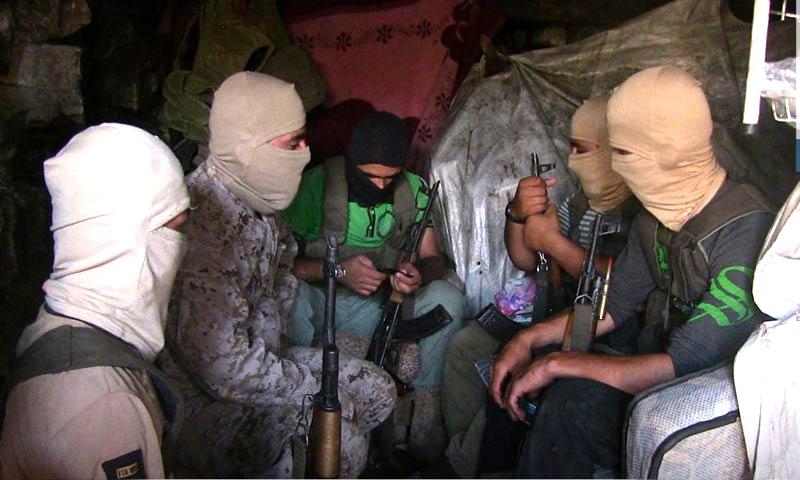
Combatants of Hay’at Tahrir al-Sham on the fronts of the Kurds mountain area in the countryside of Lattakia – July 2018 (Ebaa Agency)
Who is Behind the Spread of the “Litham”?
The spread of the “Litham” phenomenon raised questions about the part responsible for wearing it in opposition areas, and who is supporting the masked men.
Enab Baladi contacted a group of military and civilian sources in the region in an attempt to identify the cause of the spread of the “Litham”, and they held more than one side responsible.
“Jihadi Groups” Accused of Promoting the “Litham”
According to the leader in the Free Syrian Army and the head of the Political Bureau of al-Mu’tasim Brigade, Mustapha Segari, the “jihadi groups” (ISIS and al-Nusra Front affiliated with Hay’at Tahrir al-Sham) are responsible in first place.
In an interview with Enab Baladi, Segari said that the Free Syrian Army, as well as most of the symbols of the revolution, whether they are in the peaceful revolutionary or the military movement, did not wear the “Litham” since the beginning of its formation. They are people who revealed their faces and their true names, and this has led to support their credibility in front of the Syrian people.”
However, the spread of the phenomenon in the opposition areas began with the “jihadi groups,” according to Segari, who said that “these groups’ combatants wear the “Litham” not for security reasons, as they say, because it is an unconvincing and fake argument, but reflects other hidden motives that emerged later through the criminal behaviour they committed against the revolutionary forces such as robbery, kidnapping, killing, and banditry against the Free Army factions.”
He added that “those who follow the behaviour of these groups note their reliance on hiding their real identities, because they later committed crimes against the revolutionary forces in the region, and thus the “Litham” is the fortress of the criminal,” and pointed out that most of the legal sessions that were previously held in order to investigate the issue of a crime reached a dead end, and the case is filed against unknown persons because the perpetrators of the crime are unknown, and thus making it easier for the groups to repudiate the case.
Khaled Waddah, the external liaison officer in the Media Relations Office of Hay’at Tahrir al-Sham, responded to the accusations against the faction and its combatants’ use of the “Litham”, saying that “‘Litham’ is necessary in certain times and circumstances.”
Although he rejects the “Litham” to be generalized among “revolutionaries and strugglers,” as he put it, Waddah says there are actions that require it, and cited examples of those who work in critical areas that endanger their lives, such as those pursuing ISIS combatants and the regime, as well as those chasing thieves and looters.
Waddah considered that revealing the identity of those who work in the arrest of these criminals may endanger their lives, families, and privacy. He concluded that “the ‘Litham’ is a necessity according to needs and conditions, and it generally should not be used in liberated areas, markets, and public streets.”
Factions’ Responsibility and Absence of Coordination
In addition to the “jihadi groups,” a leader of the Free Syrian Army in the northern countryside of Hama holds some of the members of opposition factions who wear the “Litham” responsible for spreading the phenomenon. The leader, who asked not to be named for security reasons, said that this “has granted legitimacy for some subversive and criminal groups to carry out treacherous operations against symbolic revolutionary goals.” He considered that despite some factions’ denunciation of the phenomenon of the “Litham” and their attempts to reduce it, this was not successful due to the absence of a deterrent or an obligation of those wearing the “Litham” to remove it.
The media activist in the countryside of Hama, Abu Omar, considered that the factions “did not legitimize wearing the “Litham” because the goal of those wearing it is to destroy and sabotage the principles of the revolution. However, the factions’ security apparatuses were absent and did not eliminate the masked groups, nor did they help civilians eliminating them, due to the weakness of their security apparatuses and lack of experience on the field and control of security.”
The activist continued in an interview with Enab Baladi, “the masked men did not attack the factions’ headquarters, but attacked civilians, traders, activists, and capitalists in the region,” hinting to the factions’ relation with some masked men.
In addition, the lack of security coordination between the factions in the region, which is controlled by more than one faction, has contributed to the spread of the phenomenon of the “Litham”, according to media activist Mohammad Rashid, who stated that there are two sections of areas of control. The first section includes the areas controlled by one military party, as in the regions of Qalaat al-Madiq and al-Ghab Plain in the countryside of Hama, in addition to the western countryside of Aleppo, where there has been less incidents of assassination, kidnapping, and theft by the masked men, because of the control of one party, the National Front for Liberation and its security battalions’ combating of the phenomenon.
The second section includes areas where there are more than one faction (overlapping areas), and where there is a lack of coordination between the security battalions of these factions, and thus difficulty of identifying the masked persons and their affiliations.
Rashid said in an interview with Enab Baladi that “the high level of coordination between the security battalions of the factions in any area limits the assassination cases, even if the combatants of these factions wear the “Litham”, because this prevents the movement of masked persons under the name of any battalion or faction because the security battalions’ members would know each other thanks to the coordination.”
Rashid suggested that “members belonging to the Syrian regime are probably behind the assassination cases in the region in order to create confusion.” He considered that the closure of the crossings between the regions of the regime and those of the opposition led to a decline in the assassination cases because of the lack of security coordination between the combatants and the regime.
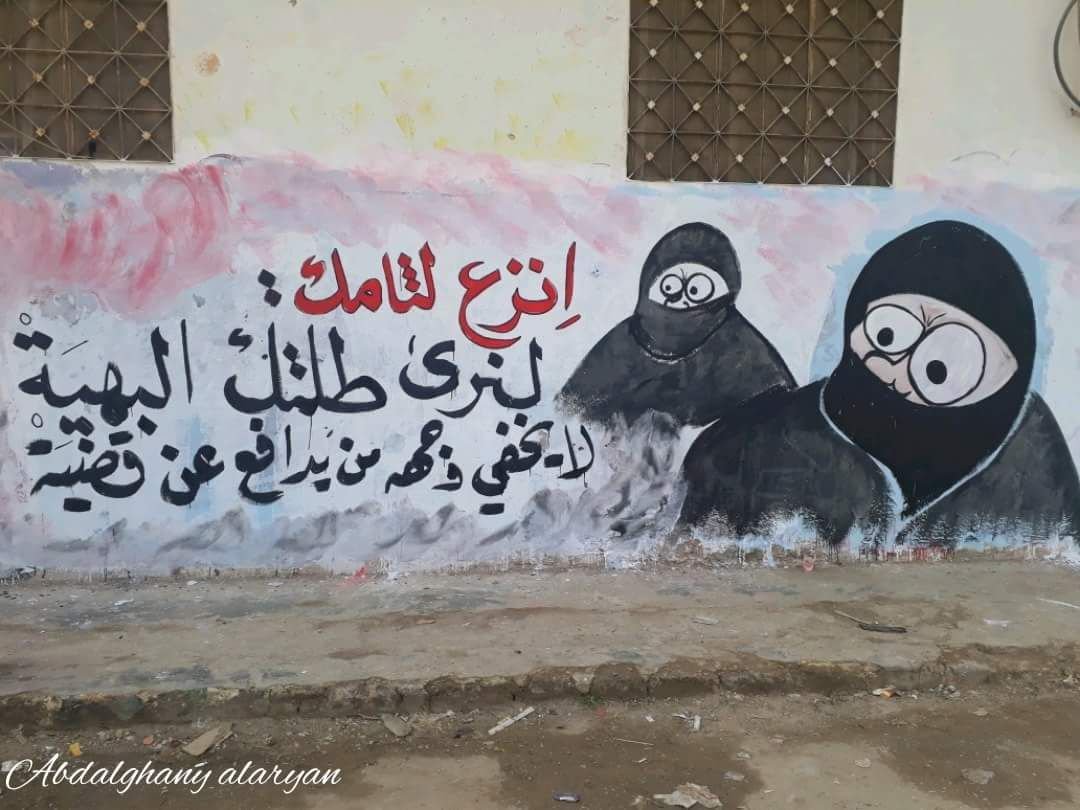
Graffiti demanding the masked men to remove the “Litham” in the city of Salqin in the countryside of Idlib – April 28, 2018 (photographer Abdelghani el-Erian)
The graffiti says: ”Remove your Litham so that we can see your gorgeous face. He who defends his cause does not hide his face”
Removing the “Litham”… A First Step to Limit the Phenomenon
Despite repeated calls by activists, civilians, and popular campaigns to combat the phenomenon of the “Litham”, these calls did not receive any response, which raised questions about how to combat the phenomenon.
According to Mustapha Segari, commander in the Free Syrian Army and Head of the Political Bureau of al-Mu’tasim Brigade, the solution lies in the criminalization of those wearing the “Litham”, because this phenomenon cannot be eliminated without real criminalization campaigns, interrogation, and accountability. This order should be issued by the military forces controlling the area.
Segari confirmed to Enab Baladi that the masked men are wandering all over Idlib and even in towns under the full control of the National Front for Liberation. He called for the criminalization of every man wearing the “Litham” in the Front’s areas and the generalization of this order in all areas of the governorate.
Enab Baladi newspaper conducted an opinion poll on its Facebook page about the effectiveness of the criminalization decrees of wearing the “Litham” in restraining the crime and theft rates in Idlib.
The question was as follows: “According to you, does the banning of the “Litham” in Idlib contribute to limiting the spread of crimes and thefts?”
76 percent of the total 612 respondents in the opinion poll considered that the banning of wearing the “Litham” contributes significantly in the reduction of crimes, assassination and violations cases. Khaled Krayyam, one of the respondents, cited the experience of Eastern Ghouta. He pointed out that the banning of the “Litham” in Ghouta contributed to the reduction of the number of crimes filed against unknown masked men.
In contrast, 24 percent of the respondents considered that the banning of the “Litham” would not be effective in combating the committed crimes. User Alan Muhdo considered that “a criminal would always be a criminal, with or without the ‘Litham’.”
At a time when there is talk about the need for the “Litham” for security reasons, a user named Ala Ala commented on the poll, saying that the “Litham” is necessary for combatants and faction members to protect them from the regime’s agents and “frogs,” as he put it.
The media activist, Mohammad Rashid, told Enab Baladi that the security coordination between the security battalions in any area is the most important matter in the face of security chaos, considering that the absence of coordination will keep on the cases of assassination, kidnapping, and murder.
For his part, activist Abu Omar considered that “the only solution to combat this phenomenon is the civilians’ cooperative efforts in their areas to form special security forces and security officers who would guard the area.”
Unsuccessful Campaigns
Amid absence of acting parties that would be capable of reducing the phenomenon of wearing the Litham, for both the factions’ members and civilians, there have been “little” civil campaigns and calls that tried to combat a phenomenon that have been terrifying civilians. However, they were not enough to reassure them.
Activists launched a campaign on social media websites on November 24 against the spread of masked men in Idlib Governorate, using the hashtags “Putt off the ‘Litham’” and “no for ‘Litham’”.
The campaign participants called on the authorities to ban the “Litham” and criminalize those wearing it as part of the penalties. They launched the slogan “A masked man, someone who made evil deeds and wants to hide them,” after the assassination of activists Raed and Hamoud.
However, other campaigns spread before the assassination, warning of the dangerous proliferation of the “Litham” phenomenon, including a campaign launched last year by Doa’at al-Sham group, which is active in the Syrian opposition territories. The campaign raised several slogans, such as “To Litham wearers … Terrorism is on the fronts of the regime and not among civilians in markets and parks, or “Your Litham frightens our children”, and “A masked man, is someone who committed evil deeds and wants to hide them”.
On the official level, local councils in the towns and villages of Idlib sought to issue resolutions that were no more than warnings without real penalties. The military council in Gergnaz issued a statement last April banning the “Litham” in the town: “Anyone who wears the “Litham” will risk being dealt with directly and without being identified by mobile patrols, whether he is a military element or a civilian”. Thus, the military council demanded the residents of Gergnaz to inform the police in case they noticed any suspicious person.
Similarly, the military council in Kafr Rumah and the Shura Council in the city of Khan Sheikhun decided in April to ban wearing the “Litham”. Yet, Enab Baladi’s correspondent in the countryside of Idlib reported that the opposition factions did not respond to these campaigns.
It is strictly prohibited to wear the “Litham”, or the so-called mask, in the town of Gergnaz. Any person who violates the ban will risk being dealt with directly and without confirming his identity, by mobile patrols, whether he is a military element or a civilian.
It is strictly prohibited also to be in proximity of public facilities.
The military council demands the local council to provide information about our fellow displaced brothers and their locations to be to be scrutinized, as we ask our folks in the city of Gergnaz to immediately inform the Free Syrian Police in case they noticed any suspicious person.
By the word of Allah, we delivered the message, so may Allah be our witness
Syrian Liberation Front
Sham Legion
Suqour al-Sham Brigades
Syrian Figures Assassinated by Criminals Wearing the “Litham”
In the past two years, Idlib has witnessed the assassination of prominent figures of the revolutionary, pacifist, and military movements in Syria by masked men, in addition to numerous kidnappings, theft, and murder cases. As such, Enab Baladi went on and tried to depict major crimes committed by masked individuals who are still anonymous to the security and legal system.
The latest assassination took place on the 23rd of last month, when prominent activists Raed Fares and Hammoud al-Jneid were murdered by masked men, driving a van, in the centre of Kernabal, Idlib’s countryside.
The activists were known as prominent political and civil pacifists in Idlib Governorate. Thus, their assassination sparked widespread reactions by journalists and activists in Syria and abroad.
On November 22, the former leader of the Army of Mujahideen and military judge, Othman Daaboul, was killed after receiving fatal gunshots from masked individuals on a motorbike, while he was in front of his house in the town of Battbo, west of Aleppo.
On July 12, unknown gunmen on a motorbike shot Qalaat al-Madiq’s Security official, Ahmed al-Dhafer, on the Hazanu-Ma’arrat Misrin road in rural Idlib. ISIS later claimed responsibility for the assassination.
On September 4, 2017, masked men, riding a motorbike, assassinated Salqin’s chief of police, Ahmed Munir Weti, in front of his house in the town of Salqin in the countryside of Idlib.
Several elements of Syria Civil Defence were likewise murdered on May 26, when masked gunmen raided al-Hader Centre in Tel Hadaya, southern countryside of Jalab, and opened fire at their permanence station. The incident resulted in killing five volunteers, wounding three others, and stealing the centre’s equipment.
A similar case took place in August 2017, when masked individuals killed seven members of Syria Civil Defence after raiding on and robbing their centre in the city of Sarmin in the countryside of Idlib.
The two incidents were met with a sense of resentment among citizens in the area, due to the popularity of Syria Civil Defence’ volunteers who carry various humanitarian activities in Syria, namely, rescuing civilians, treating the wounded and extinguishing fires, in addition to enabling the transportation of casualties to and from field hospitals and supporting the workers of water and electricity networks.
In June, masked assailants kidnapped Doctor Mahmoud Mutlaq in the city of Idlib, before posting his photographs, being tortured, on social media platforms. The hostage was released for $ 50,000 ransom, about 23 million Syrian pounds.
Several wealthy men were also plagued by the phenomenon. Jeweler Ayman Qusara and his three sons were assassinated in October 2017, after being intercepted in the Shuayb mosque area by masked men driving a Kia Rio. The victims were asked to show their identity cards, and they were accused afterward of having links with ISIS. The murderers shot Qusara and his sons using suppressor equipped pistols, and stole five kilograms of gold, which were under the victims’ possession.
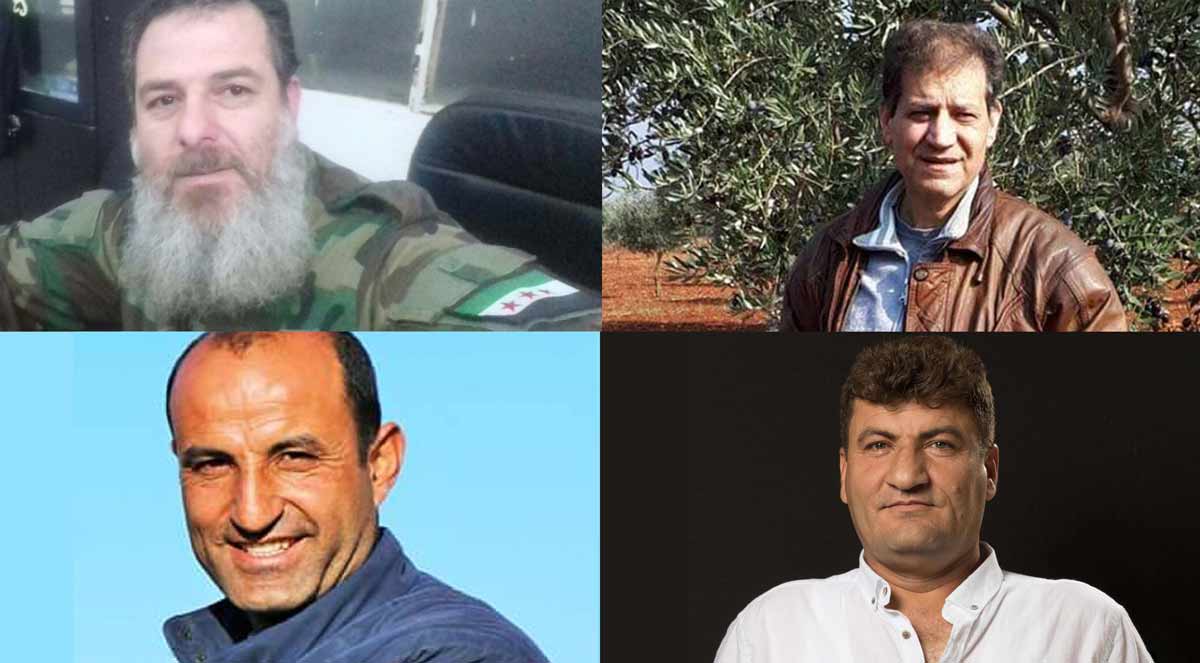
Photographs of activists who have been killed by individuals wearing the “Litham”. (Collage by Enab Baladi)
When Did the “Litham” Appear in Syria?
It was common to wear the “Litham” in the first demonstrations during the Syrian revolution, which the regime repressed using violent security methods and arbitrary arrests. At the time, officers in the Syrian Intelligence used to take photographs of protesters, identify their faces, then track and detain them when they go through security checkpoints. Accordingly, activists resorted to covering their faces in order to stay anonymous during the demonstration. Thus, the “Litham” was adopted as a means of protection.
With the armament of the Syrian revolution, various battalions and military factions were formed. Combatants affiliated to these armed groups wore the “Litham”. While talking to Enab Baladi, Abu Ratib al-Ansari, one of Ahrar al-Sham soldiers justified wearing this type of masks by “fears for the combatant’s family or relatives of being hurt as a consequence of his political and military affiliation to an opposition faction.”
Abu Ratib said that “wearing the ‘Litham’ in the beginning of war was an urgent security necessity,” explaining that secret operations were carried out within the fronts of Syrian regime, and hiding the combatants’ identity was essential for them not to be tracked by the Syrian intelligence services.
He added: “After the liberation of many Syrian regions, the “Litham” was no longer a necessity or a mandatory security requirement of the brigades, but it became a personal choice which is dictated by the combatant’s particular circumstances, and whether uncovering his identity would pose a direct threat to his family or not.
The war in Syria attracted many jihadist groups, most importantly al-Qaeda which founded its presence on the Syrian territories by forming al-Nusra front, followed by ISIS and others extremist armed formations. As a result of the interaction of these groups with the local environment, the trend of wearing the “Litham” has become a part of combatants’ identity, who advocated the phenomenon under the pretext of staying anonymous to international intelligence agencies that classify them as “terrorist” groups.
A former combatant with al-Nusra Front in Homs, who asked not to be named, told Enab Baladi: “As al-Nusra front started its operations in Homs, we were impressed by the achievements and the military and organizational strength that we perceived through the front’s endeavour in the north of Syria and elsewhere. At that point, I began wearing the same clothes and talking in the same way al-Nusra combatants did, although I was not affiliated to the battalion back then.”
He stressed that “there was no need to hide our faces or wear the “Litham”, but it was rather an old new legacy dating back to our fascination with the concept of Jihad and Mujahideen. It was also the outcome of ideological, intellectual, and cultural traits that distinguish extremist groups from other formations in the Syrian revolution. Thus, the “Litham” was used to mark the combatants’ affiliation and battalion.”
if you think the article contain wrong information or you have additional details Send Correction
النسخة العربية من المقال
-
Follow us :
Most viewed
- Turkey moves to deploy air defense system in Syria
- Intentions for popular resistance amid Israeli escalation in southern Syria
- SDF to withdraw from Aleppo neighborhoods following agreement with Damascus
- Washington's conditions raise questions about its openness and goals in Syria
- Daraa mobilizes against Israel... Civilian casualties












 A military course for Hay'at Tahrir al-Sham - July 18, 2017 (Illingworth Andrew)
A military course for Hay'at Tahrir al-Sham - July 18, 2017 (Illingworth Andrew)





 A
A
A
A
A
A
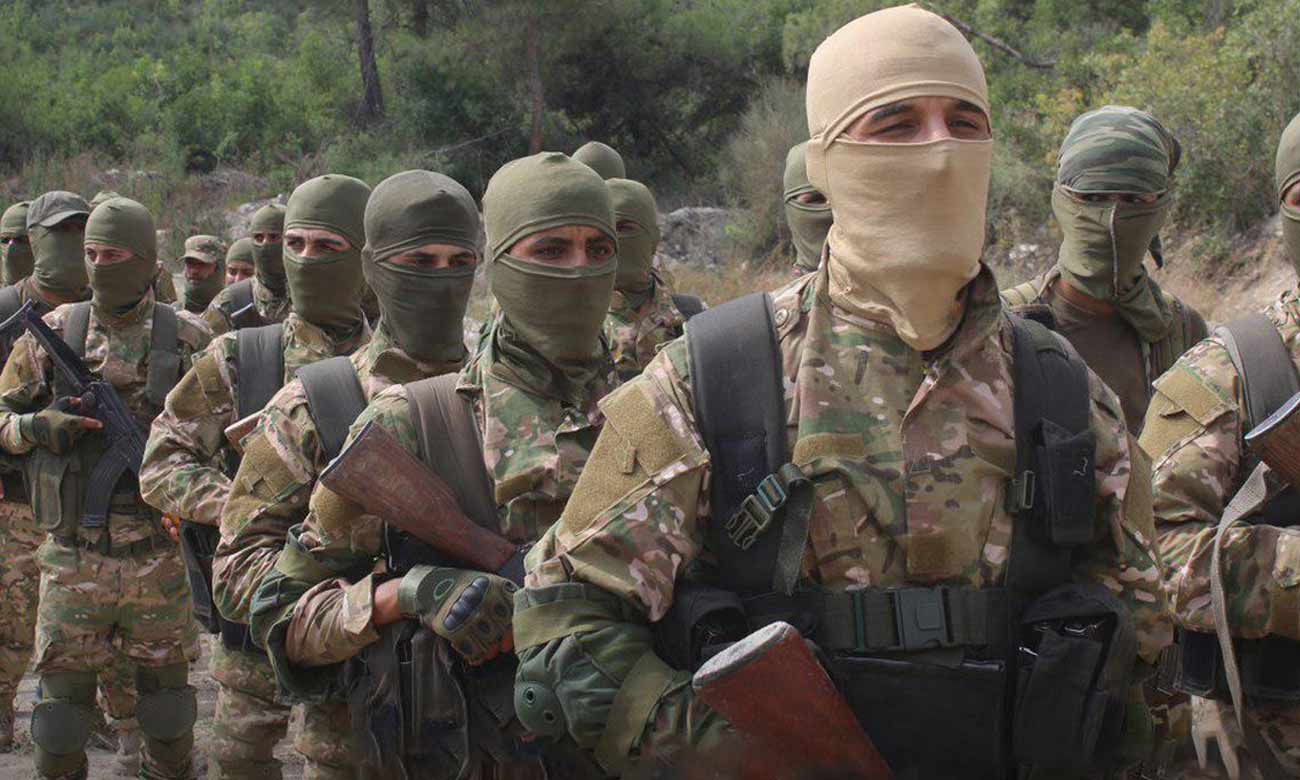
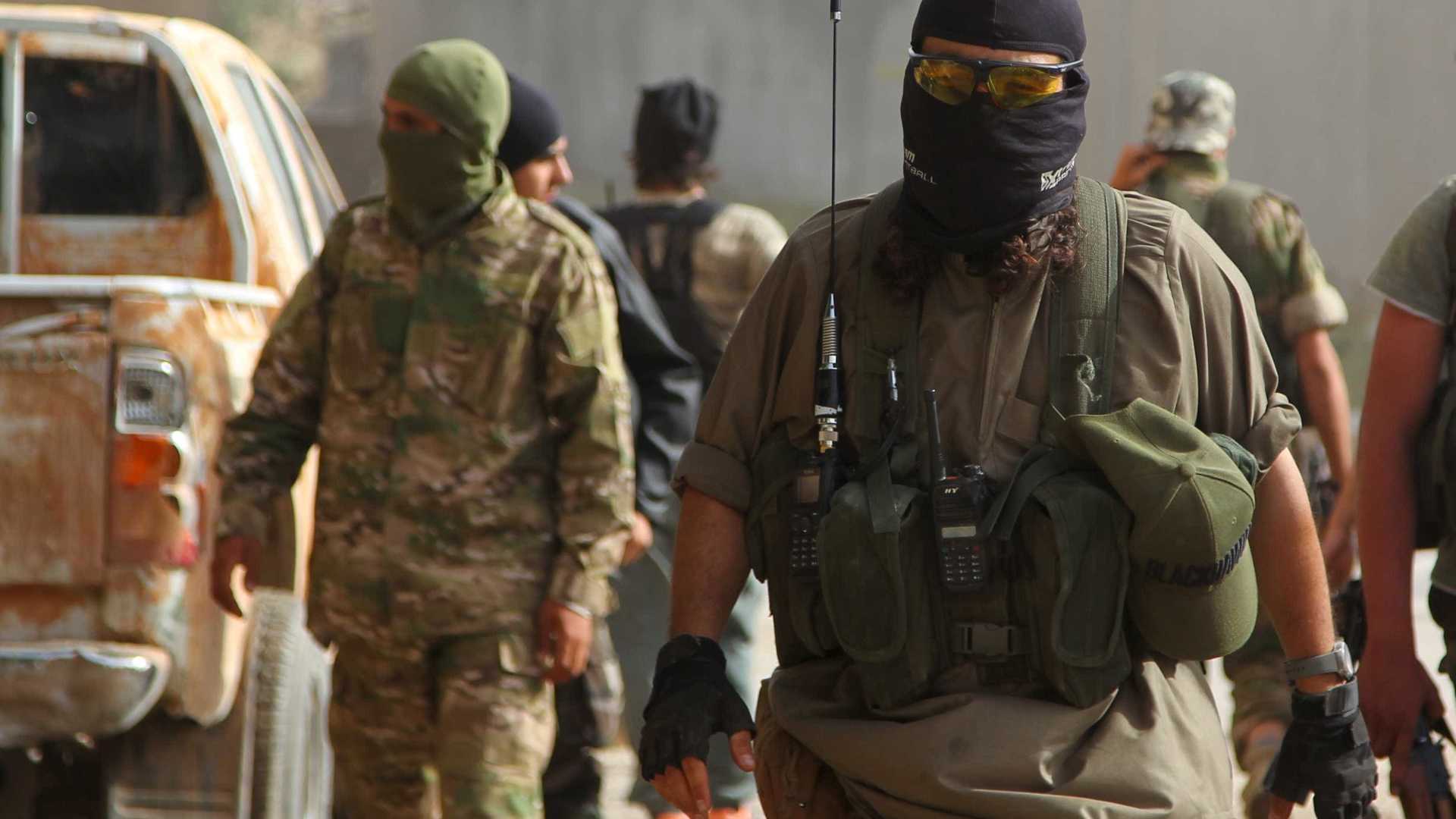
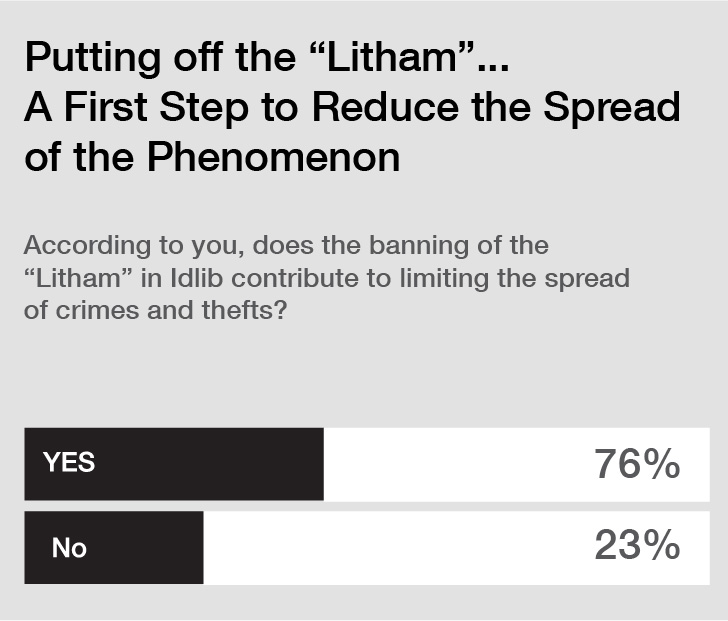

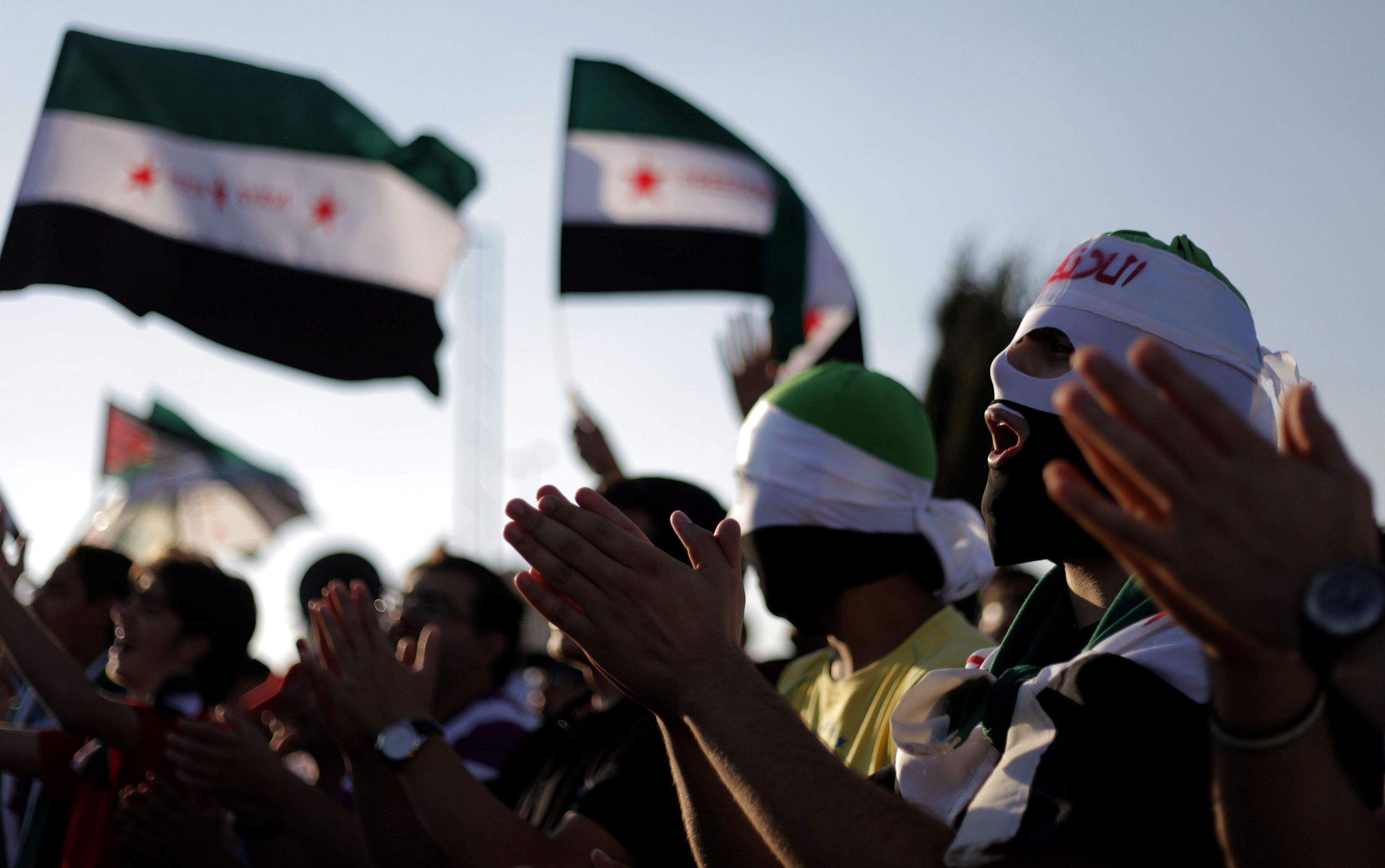





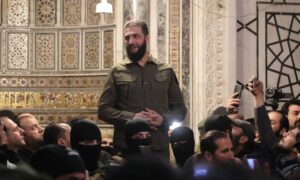
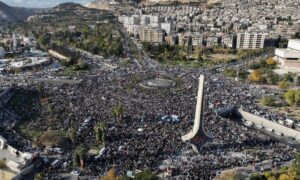
 More In-Depth
More In-Depth